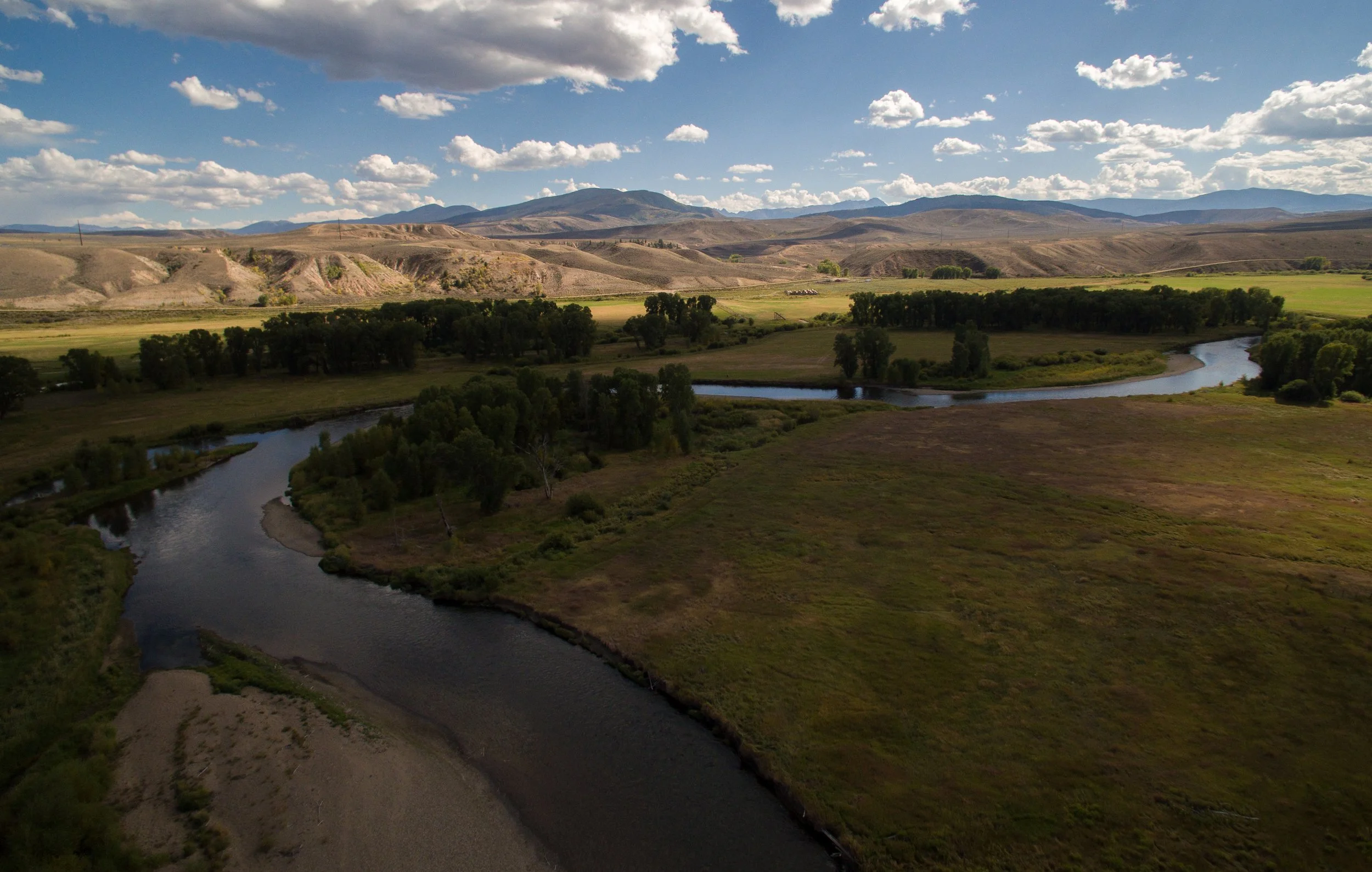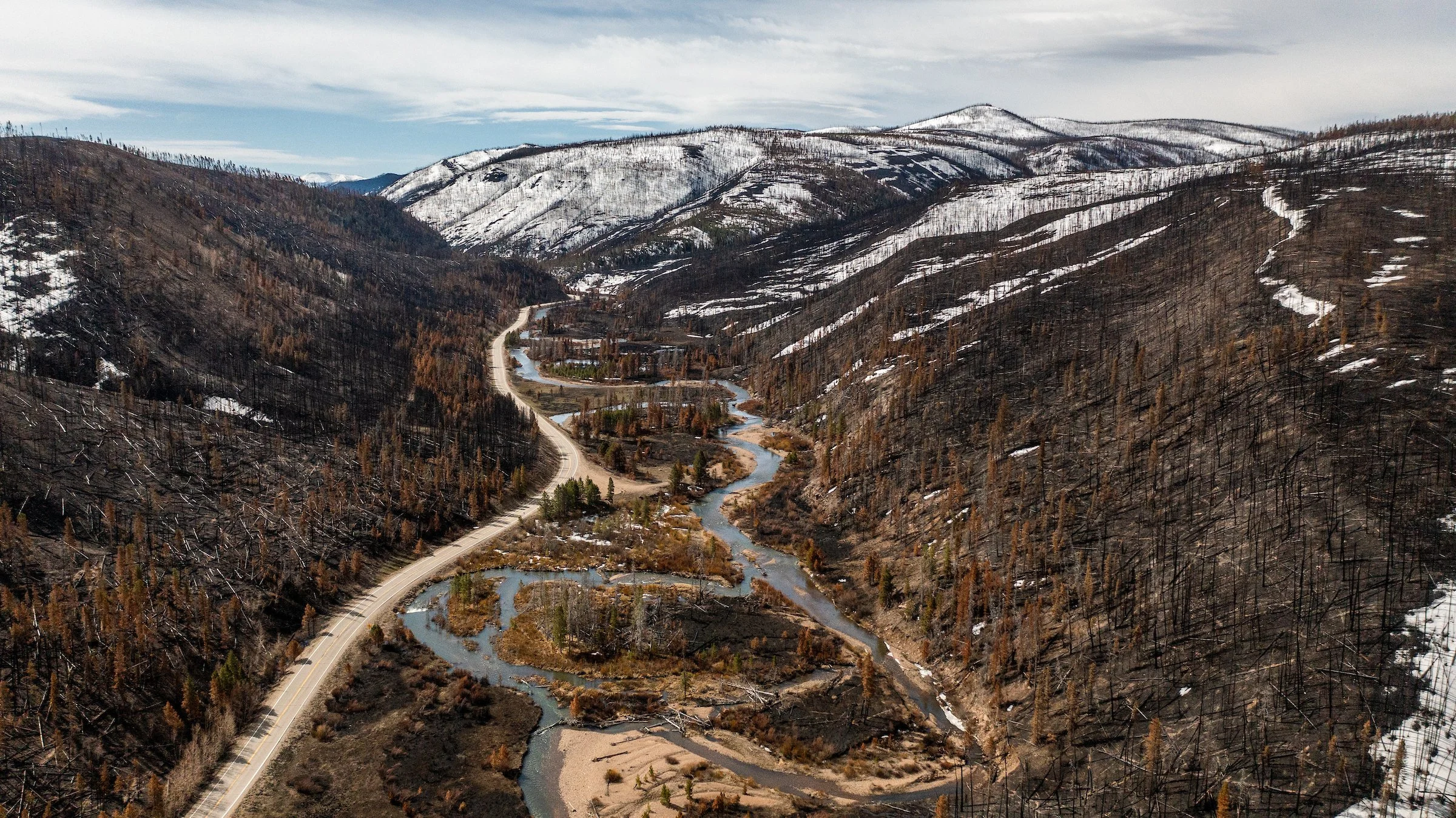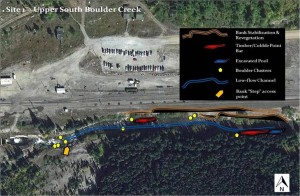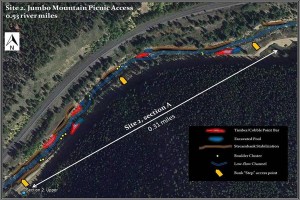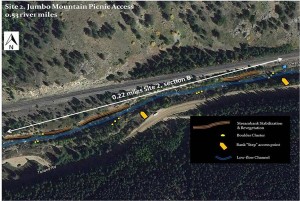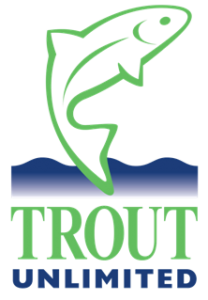With help from Colorado Trout Unlimited (CTU) and Suncor Energy, on June 5, 2014, students from Academy High in the Mapleton School District released approximately 85 fish into the South Platte River for their Trout in the Classroom (TIC) program. As part of  CTU’s South Platte River Explorers program, students raised and cared for rainbow trout in their high school classroom.
CTU’s South Platte River Explorers program, students raised and cared for rainbow trout in their high school classroom.
Taught by teacher, Mike Sanchez, students received about 200 fertilized eggs in October of 2013. From then on, students raised the fish into the “fry” stage. To ensure ideal conditions, the class would monitor the fish daily by recording and analyzing the water quality.
Before releasing the trout into the wild, the students first needed to acclimate the fish to their new waters. Students slowly replaced the water the fish were kept in with river water. “A change of a couple of degrees is a lot for the fish,” said Garrett Hanks, Colorado Trout Unlimited Youth Education Coordinator. “If we just dump them into the river, they could go into shock.”
The release took place at Carson Nature Center in Littleton, Colorado. While at the park, students learned a brief history about the park and the conservation efforts the park is currently undergoing; including a change to the flow and landscape of the river that will improve overall aquatic health, according to South Platte Park supervisor, Skot Latona.
As part of the South Platte River Explorers Program, students also collected macroinvertebrates to test under a microscope in class to get a better understanding of all the species living in the water. This will give the students a better understanding of the aquatic ecosystem and environment.

Prior to the release, students tested the water quality to learn about the pH levels, nitrate, dissolved oxygen and coliform levels. This data will help the students understand the environmental needs for fish and other species that rely on the water, which includes people. From the data collected, students can learn how to keep the waters cleaner to achieve maximum aquatic health.
Due to the whirling disease testing in Colorado, TIC is relatively new. It wasn't until a few years ago that the program was approved by the state and Colorado Parks and Wildlife. Thanks to the advocacy efforts of former CTU President, Sharon Lance, who wouldn't take ‘no’ for an answer, The South Platte River Explorers was approved by the state and is currently involved with 10 different schools.
This is the first year Sanchez and Academy High have been involved with TIC and the South Platte River Explorers. As a former seasonal fisheries biologist for Colorado Parks and Wildlife Sanchez was thrilled with the idea of the program when approached from his director and he plans to have the program on his curriculum in the fall of next year.
With funding and support from Suncor Energy, the South Platte River Explorers program offers Stream Explorers and RiverWatch programs along with the Trout in the Classroom. Through these programs, with help from their teachers, students learn a basic understanding of the beauty, complexity, and dynamics of aquatic ecosystems in addition to basic fishing skills and techniques.
Starting in middle school and continuing through high school the program integrates the curriculum through different subjects and different years. With the success the program has already achieved, according to Brandy Radey, Senior Adviser at Suncor, the energy company is looking to continue the South Platte River Explorers program as well as other conservation efforts.
Trout in the Classroom is just one of the programs offered with the South Platte River Explorers program and CTU is looking to continue with the program along with more programs dedicated to youth conservation education.
For more information on the release, look for the free, July/ August edition of High Country Angler magazine from your local fly shop or check out the Denver Post article on the event.

